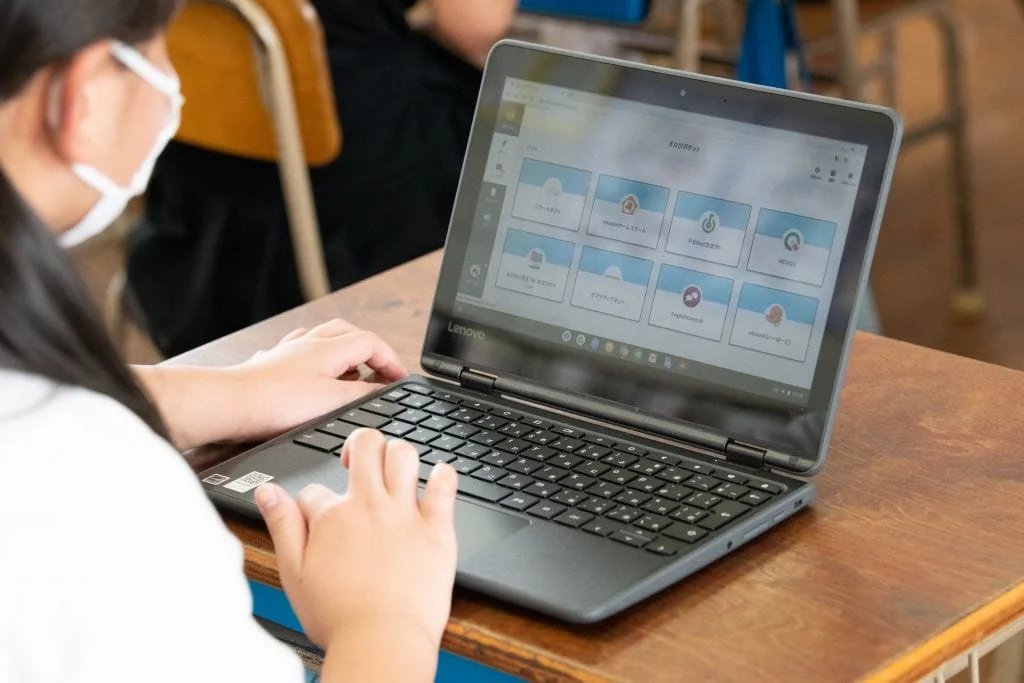Pandemic-driven uncertainties catapulted K-9 students in Japan into the next generation of education – fully equipped to learn with technology. During this sudden transition, Japanese school children needed quick access to cloud-based learning solutions. This was no easy task.
So Japan launched the nation-wide GIGA School Programme led by Koichi Hagiuda, Minister of Education, Culture, Sports, Science and Technology, to provide learning opportunities with personalisation and creativity for school children across all backgrounds.
Recognized for its education technology solutions and agility, Lenovo was selected to deliver 2 million laptops and tablets, along with services, to help upgrade the capabilities of Japan’s educational system.
A tall order
At the heart of the GIGA programme was a simple but massive challenge: how to equip all K-9 students across Japan with learning devices, either a tablet or a laptop. Each student would be provided with their own unit, so there would be no need to share. These computers, of course, would need to be Internet-ready and portable, allowing students to easily use them for online learning and to access educational resources stored in the cloud – whether at home or in the classroom.
Furthermore, users would require an entire IT ecosystem – including maintenance, repairs and replacements – to support and facilitate learning. In terms of logistics, manpower and cost, it was impractical to expect individual schools to set up and maintain a complex server-client infrastructure, so cloud-based connectivity and SaaS (Software-as-a-Service) kept operating environments simple for schools.
And then there was the cost. The federal budget for the project was set at JPY50,000 (approximately USD500) per student, with little to no supplement from municipal sources. This was extremely challenging, given that on average, Japanese consumers spend around USD1,000 on their pasocons (personal computers).
Given the enormity of the project, the timeline was originally set at three years. However, with the pandemic sweeping across the globe, the government decided to accelerate the rollout of the project, shrinking the schedule down to a mere 12 months.
Rising to the challenge
The multilayered project would bring with it a myriad of challenges, such as juggling different delivery lead times in various parts of Japan; resolving customer issues; meeting supply chain challenges on the back-end; and managing customer delivery requests.
Fulfilling this complex and massive task would not be easy, but Lenovo was up to the challenge. After all, it had the ideal device waiting in the wings – the Lenovo 300e 2-in-1 laptop with 11-inch display and a full 360-degree hinge.
Made for the school environment, the lightweight and portable device has Digital Touch Pen technology, allowing students to write directly on the screen with a conventional 2B pencil, without causing scuffing or scratches. Its flexible hinge enables four learning modes for varied uses, with features like drop resistance, sealed keyboard and mechanically anchored keys boosting its durability.
As for software and additional support services, Lenovo partnered with local IT solutions provider NTT Communications to roll out Manabi Pocket – a cloud-based service that would serve up tutorials, education plans and teaching aids. Built-in chat function allowed students to continue learning and communicating with their teachers and peers.
A GIGAntic success
The challenges of COVID-19 created a stress test that Lenovo passed with flying colors, with millions of devices delivered on time, equipped with services that Japan’s education sector desperately needed.
During Japan’s school shutdown implemented in February 2020, schoolchildren made use of Manabi Pocket’s chat function to continue their lessons at home. After the shutdown was lifted and schools reopened, parents continued using Manabi Pocket as a quick and easy way to keep in touch with teachers.
As a first-hand witness of the benefits of GIGA, elementary school teacher Yoshizuka Ohta observed that Japanese schoolchildren naturally adapted to the online-based lessons. “GIGA technology helped to unleash the students’ learning potential,” he said.
For David Bennett, President, Lenovo Japan and NEC Personal Computer, and a former schoolteacher in Japan, the project was personal. “Lenovo believes that by delivering technology to children, we provide them opportunity for their future. Japan’s GIGA school initiative embodies Lenovo’s mission of smarter technology for all,” he said.
And for K-9 students across Japan, they can rest assured knowing that even in the face of the most devastating pandemic of our time, learning, schoolmates, and teachers are only a tap away.


